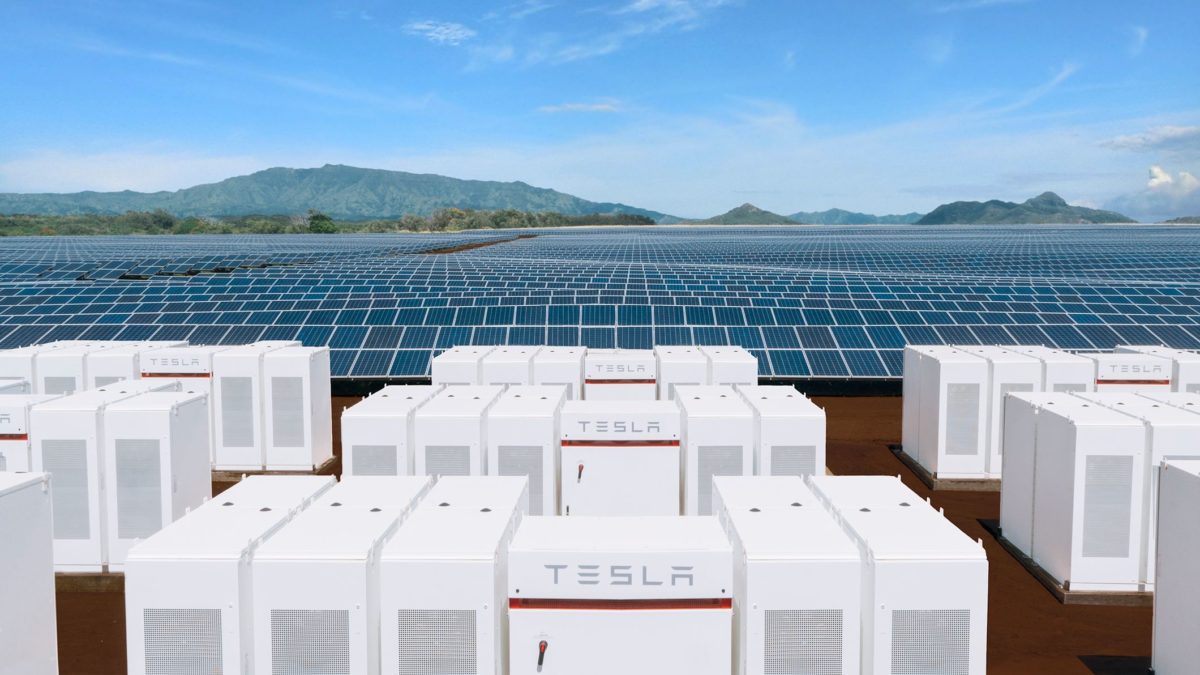In 2015 Hawaii passed legislation requiring electricity providers to generate 100% renewable energy by 2045, with multiple islands projecting that they’ll hit 100% renewable energy before 2045. Molokai expects to be 100% powered by renewables by 2020, and all of the islands – when taking into account customer-sited generation – will hit this mark sometime in the 2030s. And for good measure, last winter island leaders gathered to pledge to also move ground transportation to 100% renewable energy by 2045.
Despite all this headline-grabbing ambition, petroleum-fired generation is still the main source of Hawaii’s electricity. However, now that we’re seeing the scaling of storage begin – 33 GW in the nationwide utility pipeline and record sized projects – we can seriously consider running on solar+wind and storage.
Hawaiian Electric Industries (HEI) has submitted seven solar+storage power purchase agreements (PPA) to the Public Utilities Commission (PUC) for review. The seven projects total approximately 262 MW of solar power and 262 MW / 1024 MWh of energy storage.
The projects feature a levelized cost of electricity ranging from 8-12¢/kWh. It was noted the electricity will be sold to customers at no markup, compared to current generation from the state’s fossil fuel plants priced at around 15¢/kWh.

The solar facilities’ AC peak rating (not DC) and the energy storage power ratings were noted as being the same. A sizing of this nature would mean these plants could offer at least five hours total at peak AC output ratings – at least one hour of the solar pumping at its max hours, plus the collected solar on the DC being captured and delivered upon demand. With the Hawaiian Islands having fairly consistent solar radiation on a seasonal basis, this would mean a fairly consistent electricity source.
Further analysis of the DC sizing of the systems and total expected electricity generation on the DC and AC size would be needed to determine exactly how many hours a day electricity would be delivered from these facilities, at the full AC system ratings.
Currently, the U.S. record pricing for solar power is in three projects that have pricing of 2.37¢/kWh, 2.49¢/kWh and less than 2.5¢/kWh. Hints at one type of solar+storage pricing was seen at under a penny per kWh in Colorado, however this electricity being offered was probably “excess” from the solar versus the power having to be firm solar+storage like in Hawaii.
What might be the first utility scale solar+storage plant in the United States, located in the Hawaiian island of Kaua’i, was signed for 14¢/kWh in September 2015. This was a SolarCity/Tesla project featuring 13 MWac solar plus 13 MW / 52 MWh energy storage.
A solar plus storage peaker plant should be online soon on the island of Kaua’i, as it signed an 11¢/kWh PPA for 20 MWac / 28 MWDC plus 20 MW / 100 MWh. This one facility was suggested to meet 11% of the islands electricity needs, and would bring the island to over 50% from renewables.
HEI, made of three unique utilities – Hawaiian Electric, Maui Electric and Hawaii Electric Light – already has more than 500 MW of renewable energy under contract in addition to nearly 80,000 private rooftop systems in operation in the service area of these utilities.
This content is protected by copyright and may not be reused. If you want to cooperate with us and would like to reuse some of our content, please contact: editors@pv-magazine.com.








There is no reason Hawaii or any island in the trade wind belts be other than 100% RE.
Take Hawaii, they have strong, steady trade winds for baseload, great solar especially if on trackers for peak power and switch their diesels to gasified biomass, a stock option for them that they are designed for and Hawaii has coming out of it’s ears.
And little battery needed. Instead hold rain high in the mountains with a generator every 200′ drop so pressure doesn’t get too high to take care of most storage needs or run the biodiesels.
Note how much the solar subsidizes the battery. Plus much of the solar never hits the battery but still subsidizes it.
Why do we refuse to give regular people rights and let the market handle it? I don’t know the rules for Hawaiian ratepayers, but I bet there are all sorts of solar interconnect hurdles and you can’t pump back on to the grid from you battery at will.
This whole thing would handle itself if you can neuter the vested interests then give ratepayers good terms and grid rights.
Frank, you can bypass all that regulation by not requiring a contract for net metering… You could have as much solar as you want (that you can afford) plus a battery Bank and use a grid-tied limiter inverter that does not feed back to the grid system… Problem solved…. -Solar Gorilla
There seems to be several inverter manufacturers out there now that are building inverters that can be programmed to use battery storage for “self consumption”, rather than “net metering” or even “net billing”, which seems to have become popular with State side utilities. The electric utilities enjoy getting power from the Solar PV adopters at wholesale prices, somewhere around 4 to 6 cents per kWh and then selling the power back at night for the “peak demand” premium price which may be 20 to 30% more than off peak electricity.